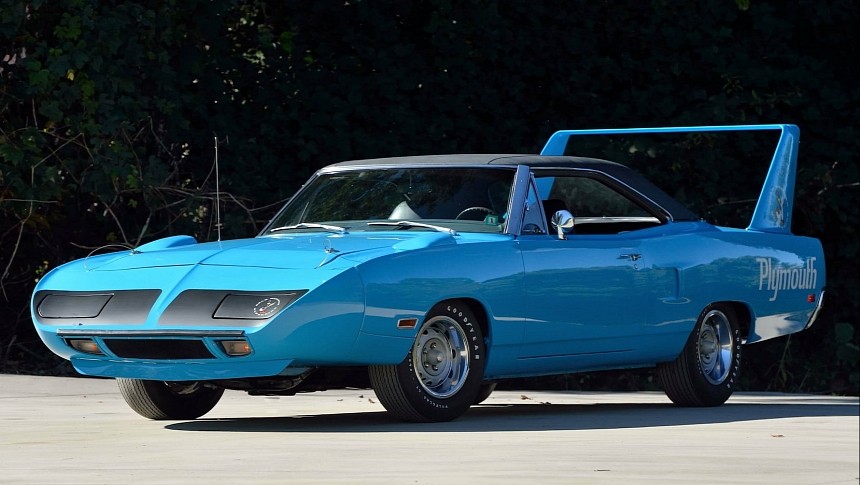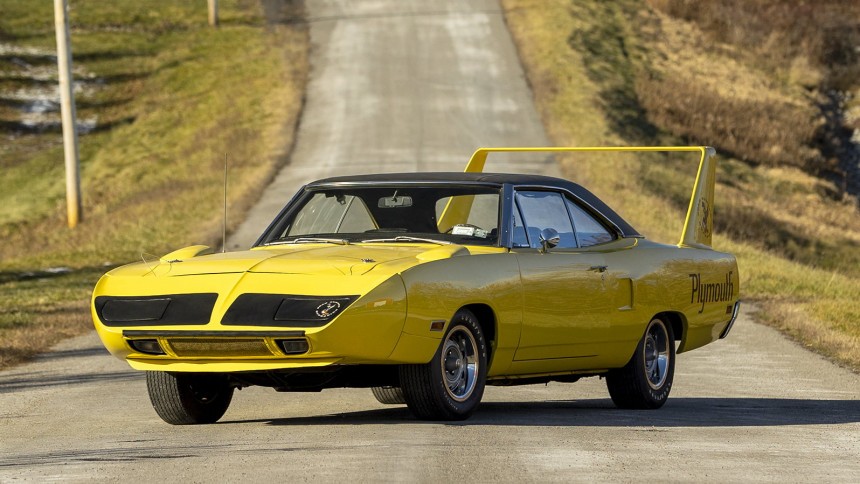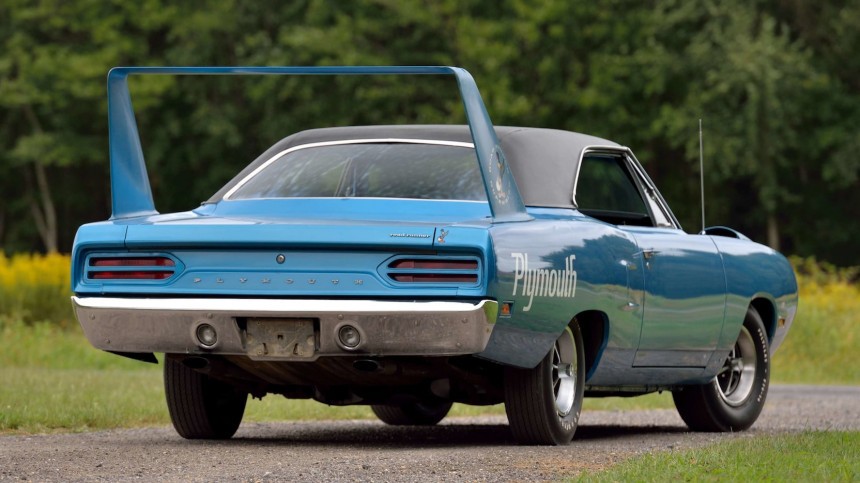In the late 1960s and early 1970s, NASCAR entered a new era. The sport saw aerodynamics play a role for the first time with the introduction of the Dodge Charger Daytona. This became the first car in NASCAR history to reach 200 mph, and it spawned the Plymouth Superbird, the rival from the Chrysler Corporation. However, despite both cars clearly being successful, the reality is that they ended up being too fast for NASCAR to handle. So fast, in fact, they were quickly banned.
What would become known as the “aero-cars” lasted just a couple of years. Aerodynamics, now, of course, plays a big role in pretty much all motorsport. But back then, NASCAR was terrified at what that prospect had in store for the cars and the racing itself.
Plymouth had seen just how strong the Dodge was and thus elected to create its own version. Plymouth further refined the nosecone and body design of the Charger to create a car even more aerodynamic than its sibling. This was the Superbird, a new version of the Roadrunner. The rear wing, for example, was as high as it was in order to clear the roofline and allow it to be in clean air. The Superbird would become most famous in NASCAR in the hands of Richard Petty, wearing the famous 43 and the Petty Blue. The car would also become a character in the Disney Pixar movie Cars.
Petty was Plymouth's star driver in NASCAR, but they nearly lost him to Ford after initially saying they couldn’t make the Superbird. While the Superbird was 3 mph slower than the Daytona, it generated more downforce than its rival, and it had a sleeker body. A 433 hp HEMI V8 engine was the final piece of the puzzle to help win Petty back to Plymouth. He clearly wouldn't regret his decision. Across the 1970 season, Petty would win eight races for the manufacturer, although he wouldn't win that year's title.
NASCAR resps, though, were worried. Motorsport safety at the time hadn't caught up to the speed levels of the Superbird or the Daytona. It had to step in to prevent a major catastrophe. Even the tires or brakes were suffering thanks to the high speeds. When Ford hinted that they were also creating an “aero-car”, NASCAR decided enough was enough. New rules came in to limit the performance of the cars. Engine displacement was reduced to 350 ci, and anything larger would need offsetting with additional weight. The formula didn't work for either the Superbird or the Dodge Charger Daytona.
Only 1,935 examples of the Superbird were sold, making it one of the rarest muscle cars in the world. Some models featured the NASCAR 426 Hemi V8, but only 135 examples of these were made, making them the rarest version of the Superbird.
The irony of this is that, despite NASCAR banning it and the market not taking to the Superbird, the muscle car is now one of the most desirable. Plymouth Superbirds can go for huge sums of money. The most one has ever sold for is a staggering $1.65 million, highlighting just how sought-after the cars are. The Superbird and Charger Daytona were simply ahead of their time. NASCAR now regularly exceeds speeds of 180-200 mph, except now technology has ensured the cars are as safe as possible. This high-speed trend though, all started with the remarkable Dodge and Plymouth, two of the greatest racecars ever created.
How Plymouth came up with the Superbird
At the time of the Superbird and Daytona, Ford was cleaning up the competition. This is despite Chrysler’s Hemi engine being more powerful. The original Dodge Charger was incredibly poor in aerodynamic terms, meaning that a major redesign was needed. Remarkably, Chrysler’s recently shut-down missile division came to its aid. A former engineer on the Mercury Redstone project created a nosecone for the Charger to make the Charger Daytona. A rear wing was then added to balance the additional downforce the sloping nose provided. The Daytona ultimately won and finished third in its first race in 1969.Plymouth had seen just how strong the Dodge was and thus elected to create its own version. Plymouth further refined the nosecone and body design of the Charger to create a car even more aerodynamic than its sibling. This was the Superbird, a new version of the Roadrunner. The rear wing, for example, was as high as it was in order to clear the roofline and allow it to be in clean air. The Superbird would become most famous in NASCAR in the hands of Richard Petty, wearing the famous 43 and the Petty Blue. The car would also become a character in the Disney Pixar movie Cars.
The Superbird was a major force in NASCAR
NASCAR resps, though, were worried. Motorsport safety at the time hadn't caught up to the speed levels of the Superbird or the Daytona. It had to step in to prevent a major catastrophe. Even the tires or brakes were suffering thanks to the high speeds. When Ford hinted that they were also creating an “aero-car”, NASCAR decided enough was enough. New rules came in to limit the performance of the cars. Engine displacement was reduced to 350 ci, and anything larger would need offsetting with additional weight. The formula didn't work for either the Superbird or the Dodge Charger Daytona.
The end of the aero-cars in NASCAR
The cars were still legal to race in the 1971 season after the rule changes. But the power-to-weight consequences with the smaller engine or larger weight of the cars meant they would be uncompetitive. NASCAR would do what it could for a while to limit the speeds of its vehicles. Of course, the Superbird had also been offered to the public, but its sleek styling was oddly one of the reasons the car didn't sell in large numbers. It wasn't unusual to see dealerships left unable to sell their Superbirds as anything than regular Plymouth Roadrunners.Only 1,935 examples of the Superbird were sold, making it one of the rarest muscle cars in the world. Some models featured the NASCAR 426 Hemi V8, but only 135 examples of these were made, making them the rarest version of the Superbird.



















